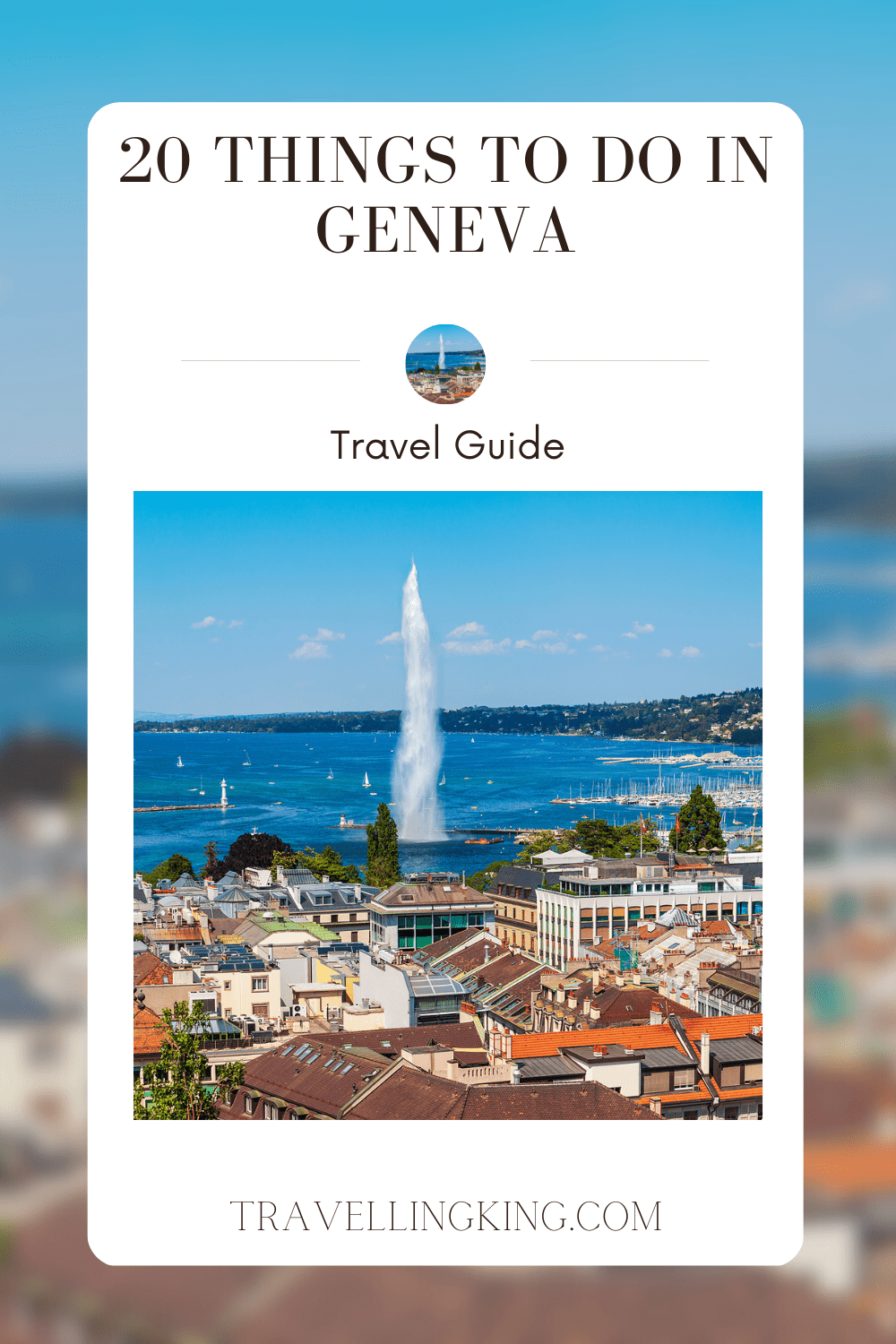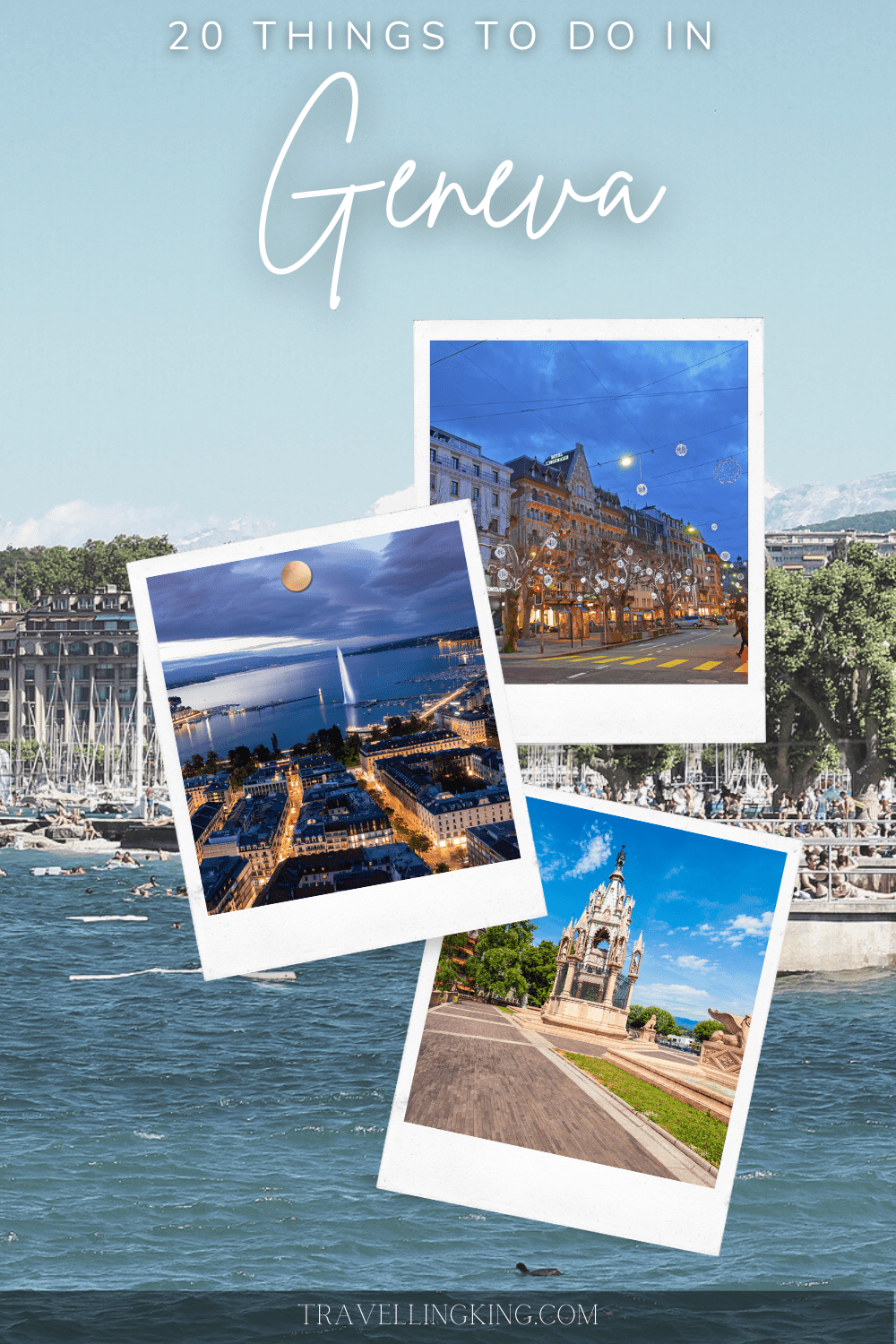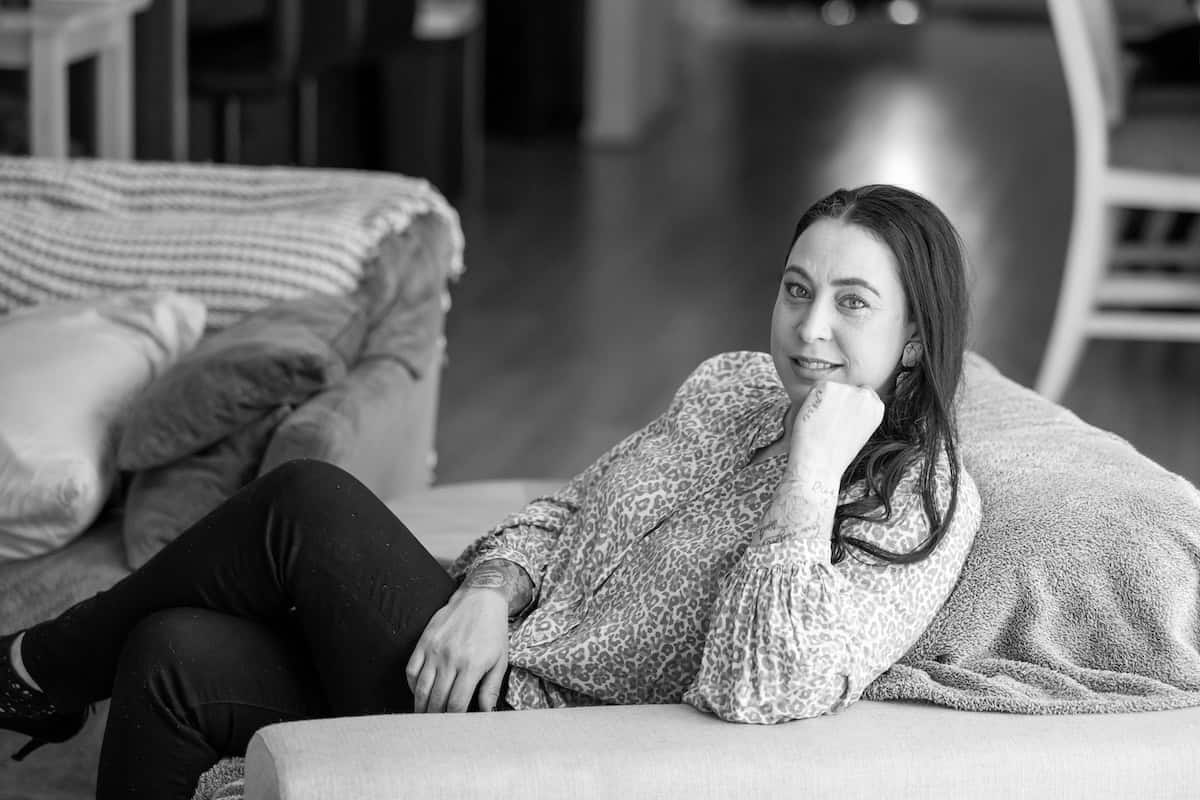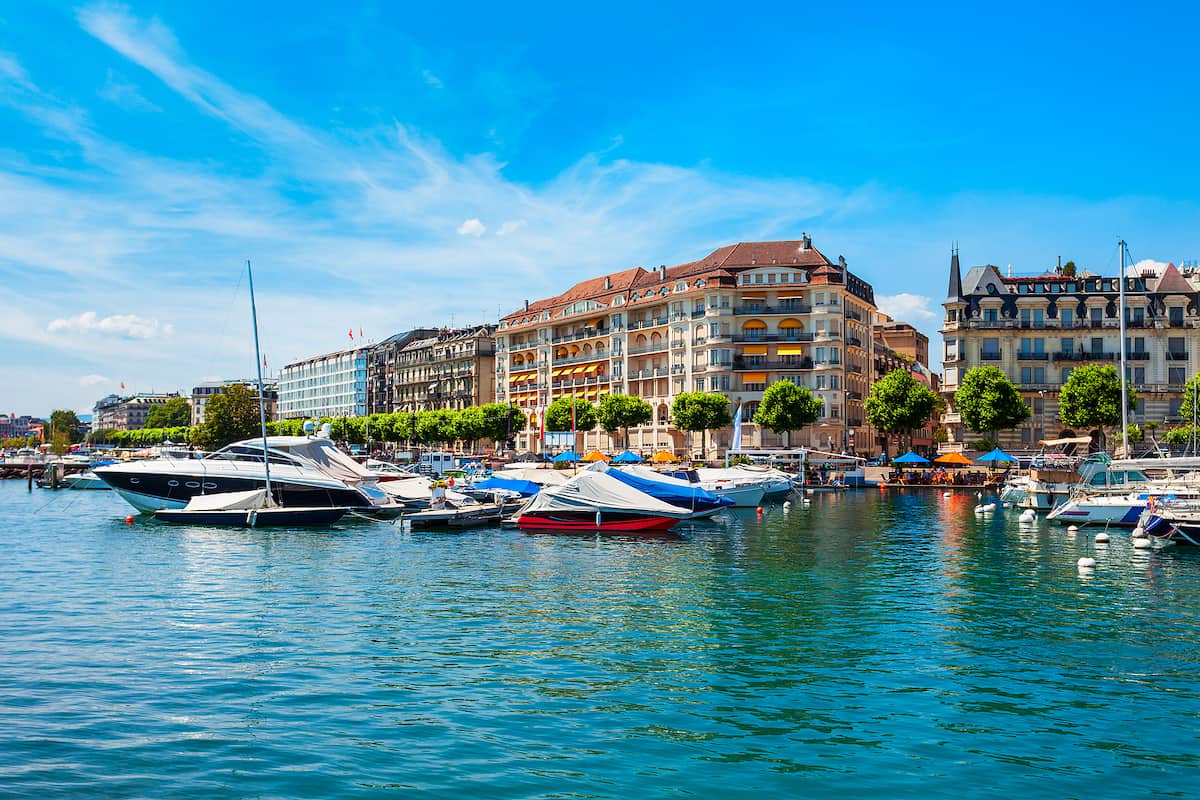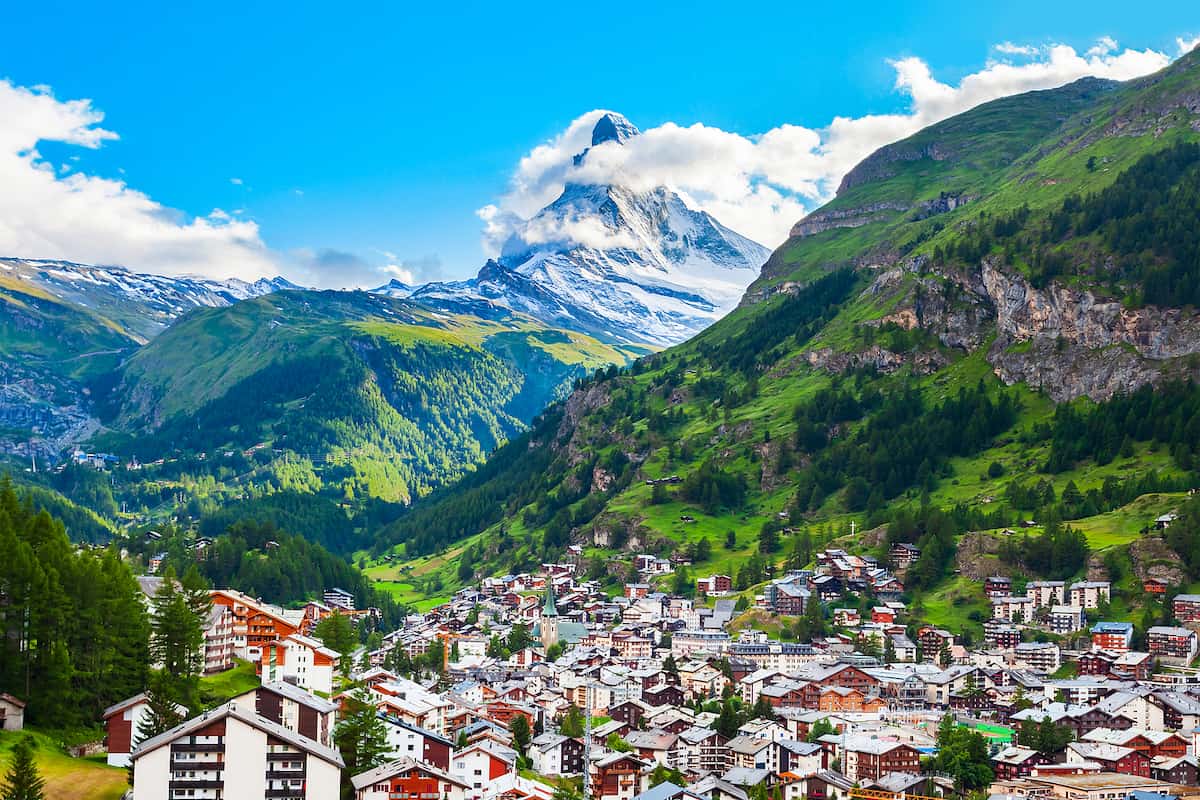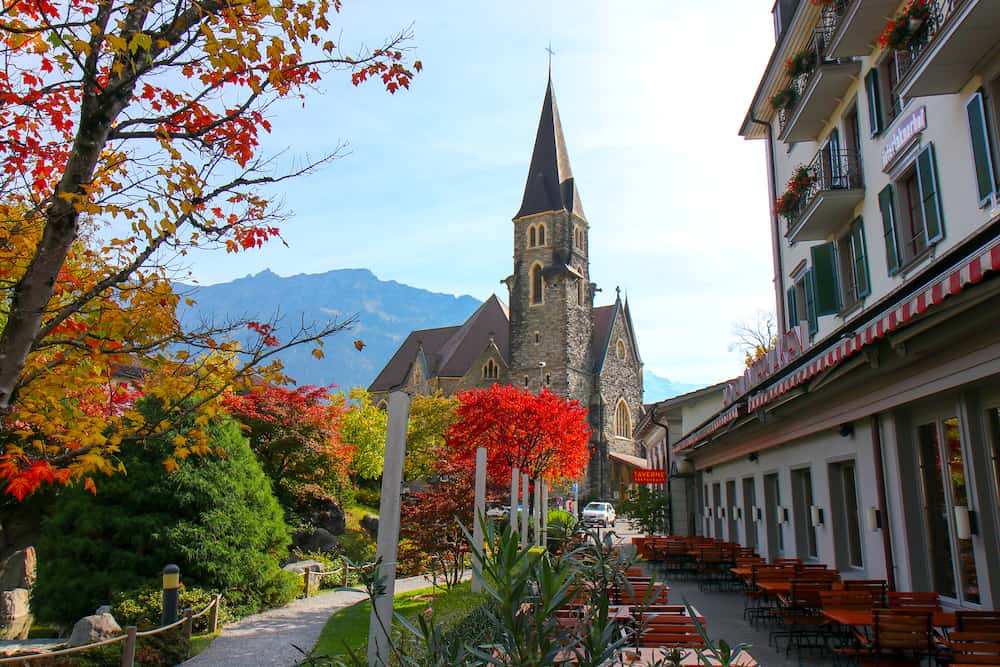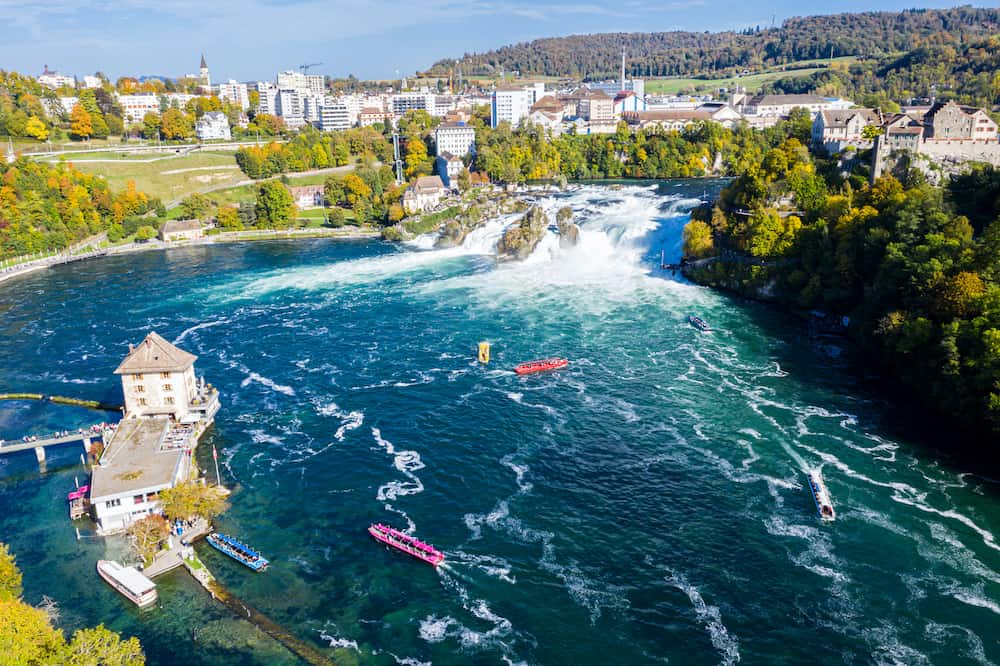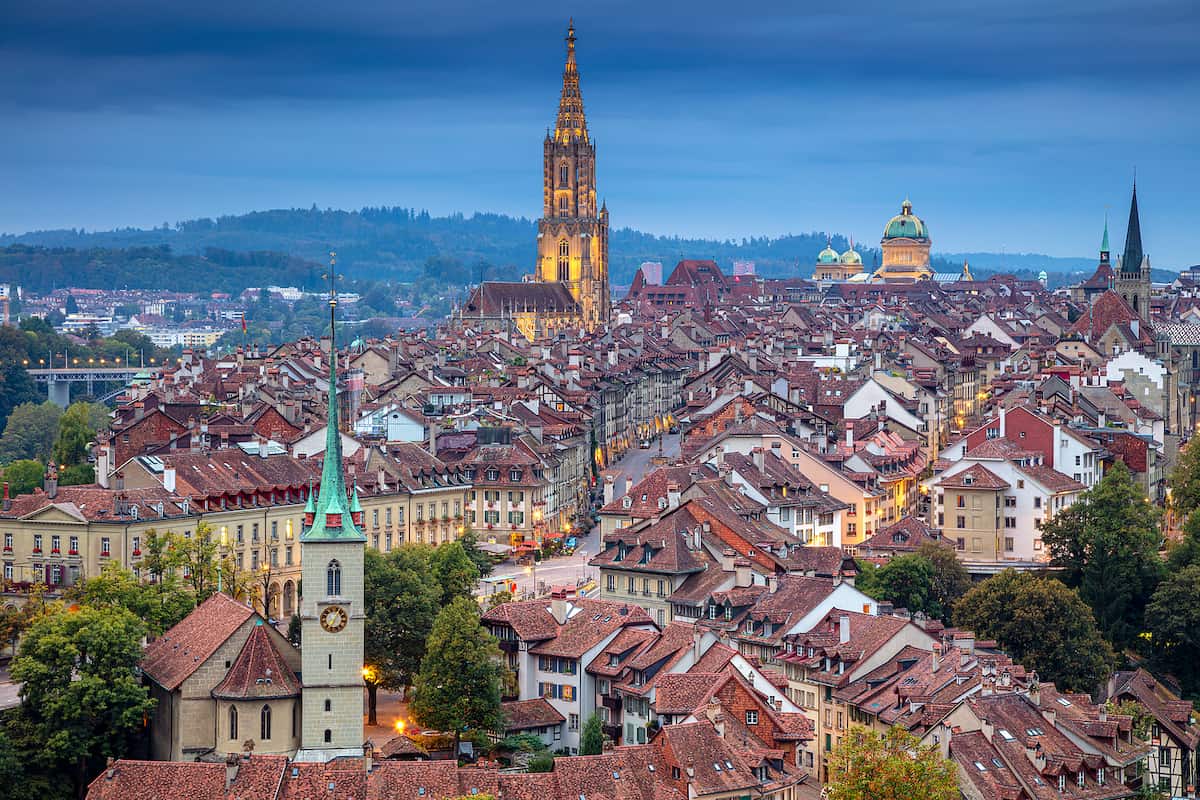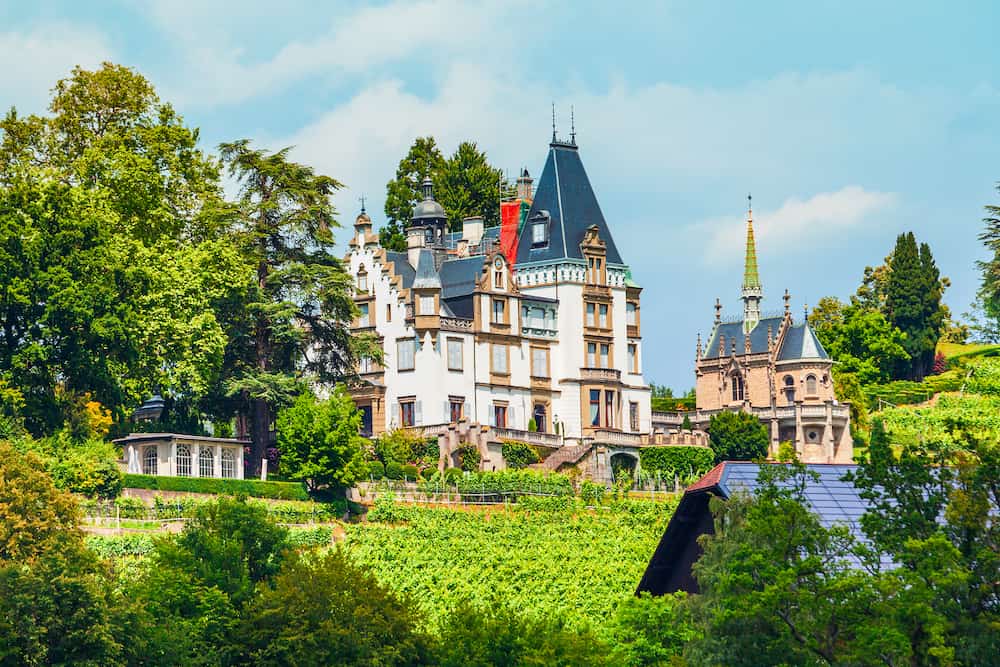20 Things to do in Geneva
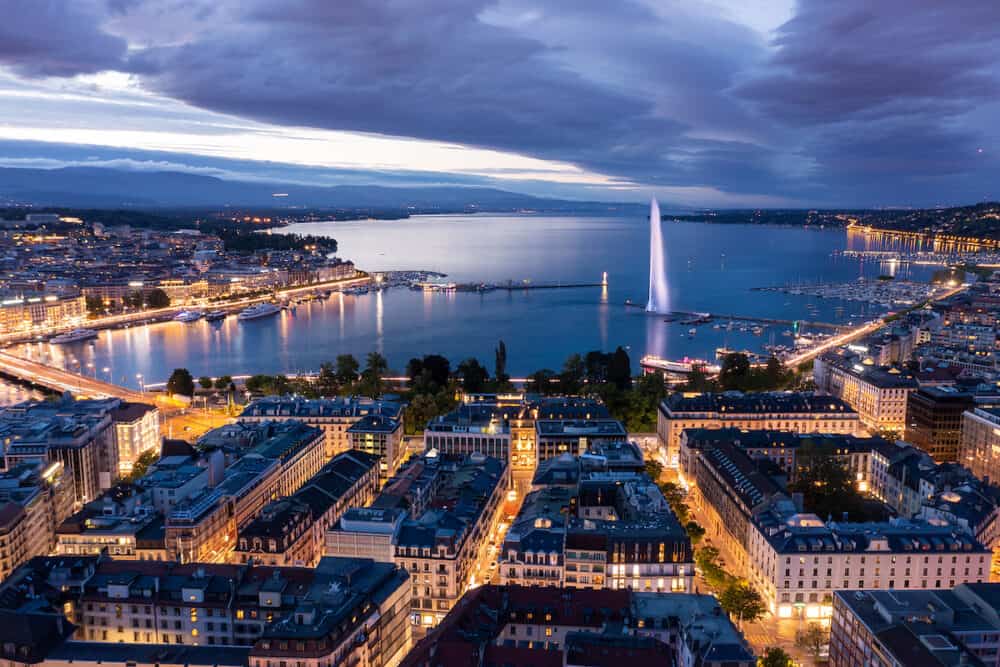
Geneva, the second most populous city in Switzerland, is known for its scenic beauty, cultural heritage and cosmopolitan way of life.
Located at the western end of Lake Geneva, the city is surrounded by picturesque snow-capped mountains and offers a wide range of recreational activities, shopping opportunities and world-class cuisine.
Whether you are a history buff or a nature lover, there are so many things to do in Geneva that everyone can enjoy.
In addition to its natural beauty, Geneva is also home to many museums, galleries and cultural institutions.
If you’re planning a trip to this incredible city but aren’t sure what to do there yet, here are 20 things to do in Geneva, Switzerland, including all of the must-see attractions and some hidden gems too.
Plan your trip
Save on fees abroad with the Wise Card—use it at ATMs, restaurants, and for flights or hotels in over 150 countries. Manage 40+ currencies in real-time with the Wise app.
Need Help Planning?
- Cheap Flights: Find the best deals.
- Accommodation: From hostels to luxury stays.
- Car Rental: Affordable options worldwide.
- Sightseeing Tours: Explore without breaking the bank.
- Travel Adapter: One adapter for all your needs.
- Travel Insurance: Don’t risk it—stay covered.
This post includes affiliate links. Read my full disclosure and content policy.
St Pierre Cathedral
St Pierre Cathedral is a magnificent Gothic-style cathedral in the heart of the Old Town. While initially constructed in the 12th century, it has undergone many renovations and additions over the years, resulting in a blend of architectural styles.
The cathedral is known for its impressive facade, which features two tall bell towers and intricate stone carvings. Inside the cathedral, you can admire the stunning stained glass windows, the impressive organ, and the intricate wood carvings.
One of the most fascinating things about the St Pierre Cathedral is its connection to the Protestant Reformation. The cathedral was the home church of John Calvin, one of the key figures of the Reformation movement.
You can learn more about Calvin and his impact on the Protestant church by visiting the archaeological site beneath the cathedral. Here, you can see the foundations of the original church and learn about the history of the Reformation in Geneva.
Seeing this stunning historic structure and exploring the ruins below is easily one of the best things to do in Geneva’s Old Town.
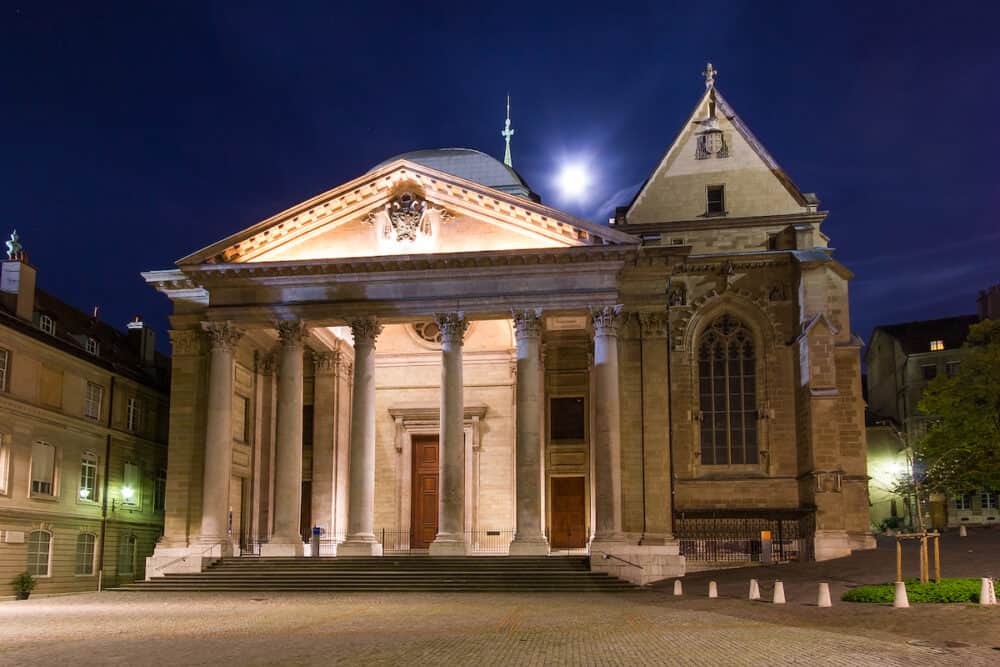
Lake Geneva
Lake Geneva (also called Lac Léman) is the largest body of water in Switzerland and is an integral part of the city. The clear blue waters are surrounded by several cities and towns, as well as the snow-capped Swiss Alps and the Jura Mountains.
The lake provides so many activities, whether you are on the water or by the shoreline, and is a popular place for swimming, boating, paddle boarding and windsurfing.
A boat cruise is not only an amazing way to experience the lake but to also see Geneva and the surrounding regions from a unique vantage point. You can take a tour with an audio guide, or opt for a relaxing dinner cruise in the evening.
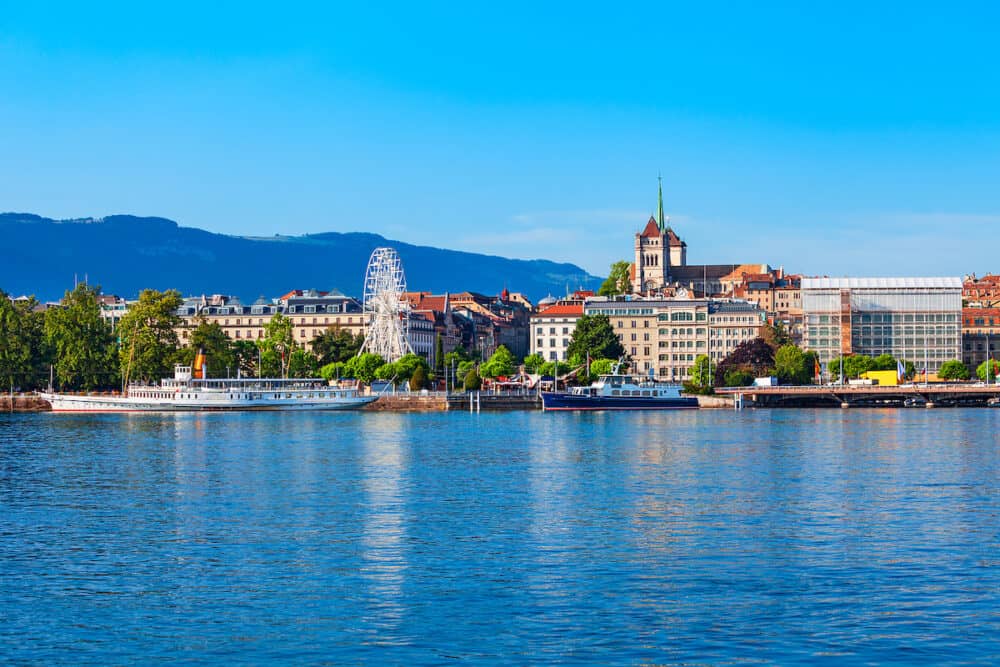
Reformation Wall
The Reformation Wall, also known as the Wall of the Reformers, is a monument located in the Parc des Bastions in Geneva. It is dedicated to the key figures of the Protestant Reformation, including John Calvin, William Farel, Theodore Beza and John Knox.
Designed by French artist Paul Landowski, it was inaugurated in 1909 to celebrate the 400th anniversary of Calvin’s birth.
The impressive wall is over 100 metres long and nine metres high. It also features four large statues of the reformers, each standing over five metres tall, as well as numerous other smaller statues.
The monument is made from pink sandstone and is a stunning example of Neoclassical architecture. It is a must-see in Geneva for anyone interested in the history of religion and politics.
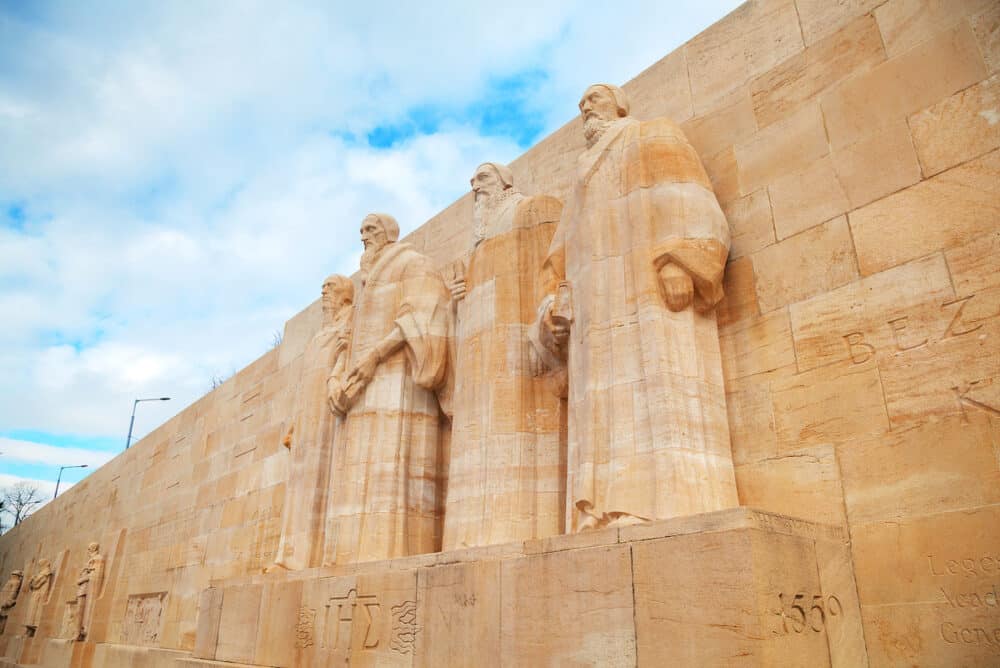
The Geneva Water Fountain
One of the best things to do in Geneva at night is to see the Geneva Water Fountain, one of the most iconic landmarks in the city. Also known as Jet d’Eau, it is one of the largest fountains in the world and is located in the middle of Lake Geneva.
The Jet d’Eau is an impressive sight to see, with water shooting up to a height of 140 metres into the air. You can view the fountain from many locations around the city, but the best views are from the shores of Lake Geneva.
The fountain operates throughout the year, but its schedule varies depending on the season. During the summer months, it runs daily from morning until late in the evening, while during the winter, it operates only during the daytime.
If possible, it’s best to experience it at nighttime, as the fountain is lit up in various vibrant colours.
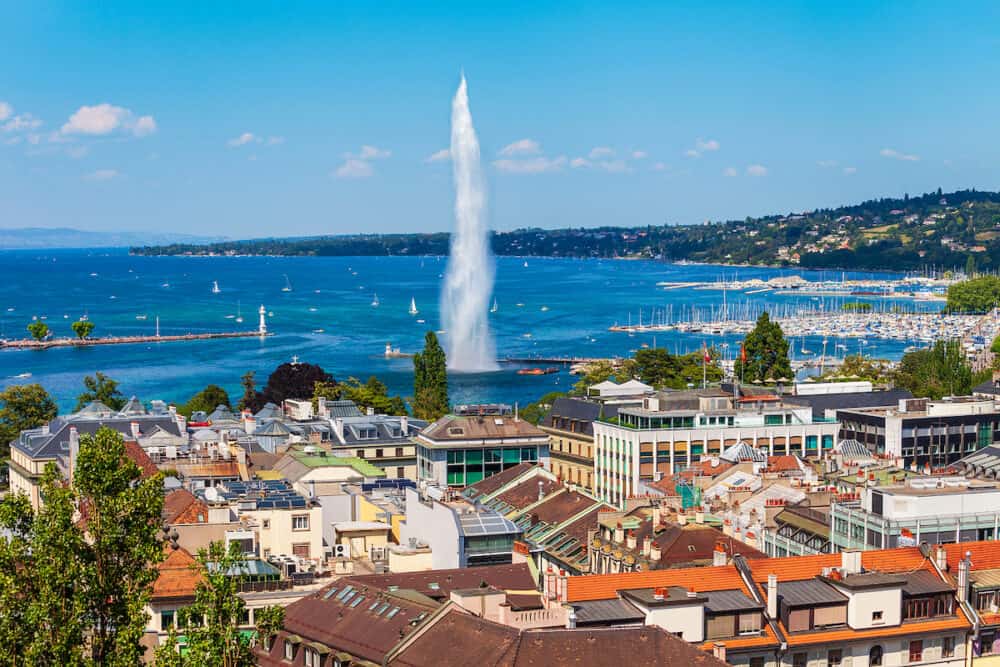
The Flower Clock
Jardin Anglais, or the English Garden, is a public park located on the shore of Lake Geneva. Created in 1855, it contains beautiful flower beds, trees and manicured shrubs, as well as views of the lake and the Jet d’Eau.
However, it is best known for its famous flower clock (L’horloge fleurie), located near the entrance of the park.
Since Geneva has a long history of both watchmaking and horticulture, the Flower Clock serves as a showcase of the city’s expertise in these areas.
With a diameter of five metres, this clock is made entirely of flowers, with the exception of the electronic mechanism that displays the time. The flowers are changed twice per year to reflect the seasons and typically more than 6,000 plants are used at a time.
Ever since it was designed in 1955, the clock has become one of the symbols of the city, so seeing it in person is one of the best free things to do in Geneva.
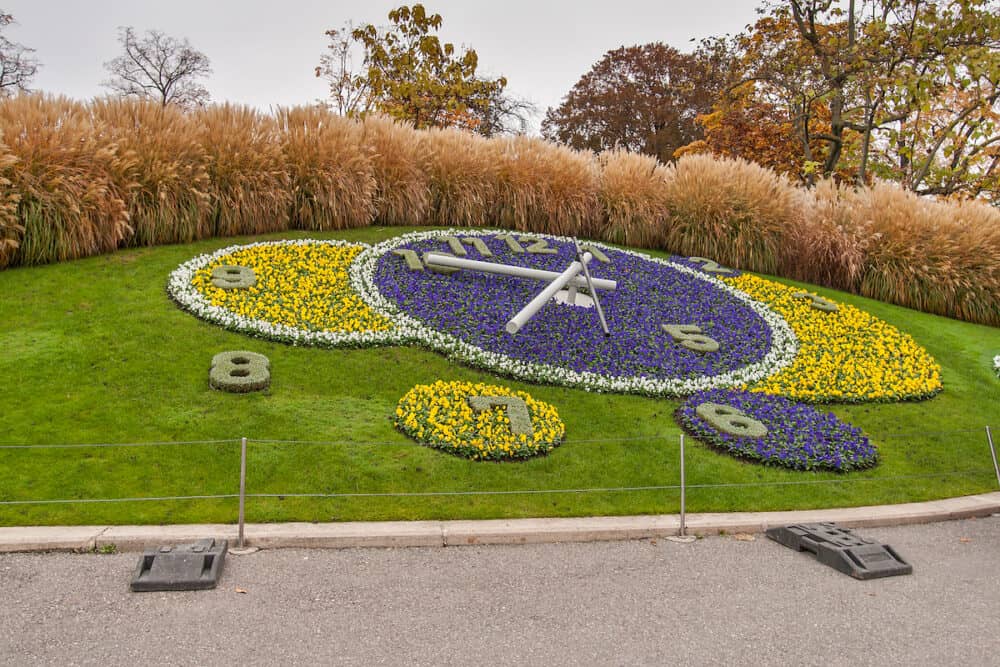
Bains des Pâquis
Bains des Pâquis is a popular public beach located on a pier in Lake Geneva, just a short walk from the Old Town.
The beach is a favourite spot for locals and tourists alike, and is a great place to relax and soak up the sun during the summer months.
In addition to swimming, Bains des Pâquis also features a range of facilities to enjoy, including a sauna, hammam and massage services.
There is also an organic restaurant that serves up a range of delicious dishes using local produce, from traditional Swiss cuisine to international favourites.
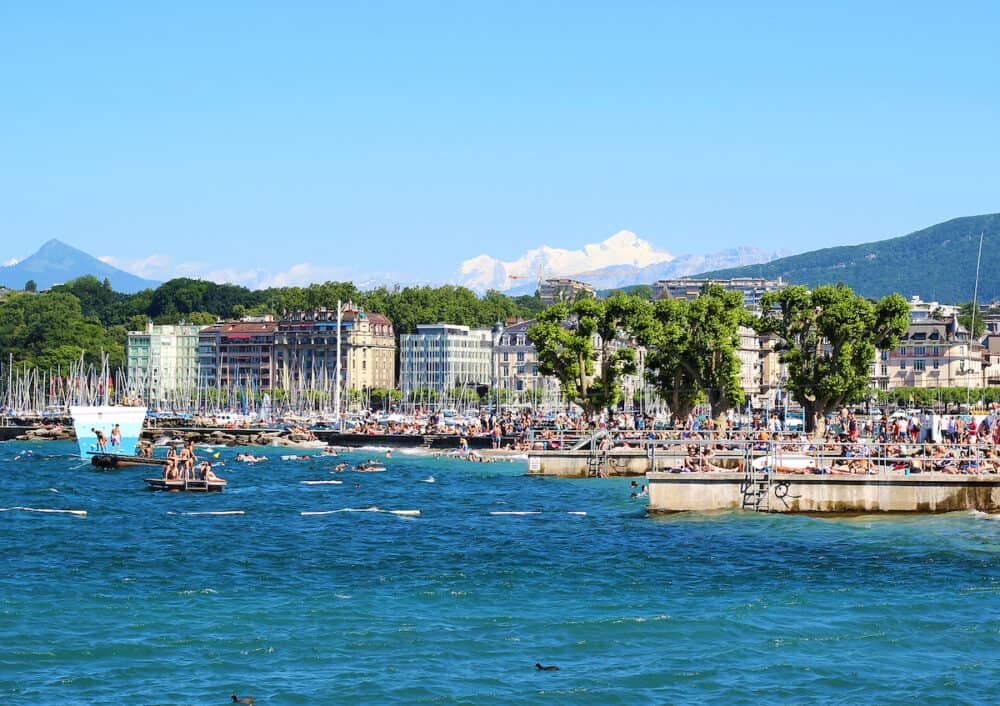
Geneva Botanical Garden and Greenhouse
The Geneva Botanical Garden was established in 1817 along the shore of Lake Geneva. Covering an area of over 28 hectares, it is home to more than 16,000 species of plants from all over the world.
If you’re wondering what to see in Geneva that won’t be too expensive, you’ll be happy to know that admission into the gardens, including its temporary exhibitions, is completely free.
The garden is divided into several themed areas, including the alpine garden, the rock garden, the rose garden, the herb garden and the arboretum, among others. It also features a large pond with a variety of aquatic plants and animals.
One of the best parts of the botanical garden is its large greenhouse, which contains a wide range of tropical and subtropical plants. Built in 1902, it covers an area of over 2,000 square metres and features several different climate zones.
Here you can explore the rainforest, the desert and the Mediterranean zones, as well as see a variety of interesting plants like orchids, cacti and ferns. The garden also contains one of the largest herbariums in the world, with over six million specimens.
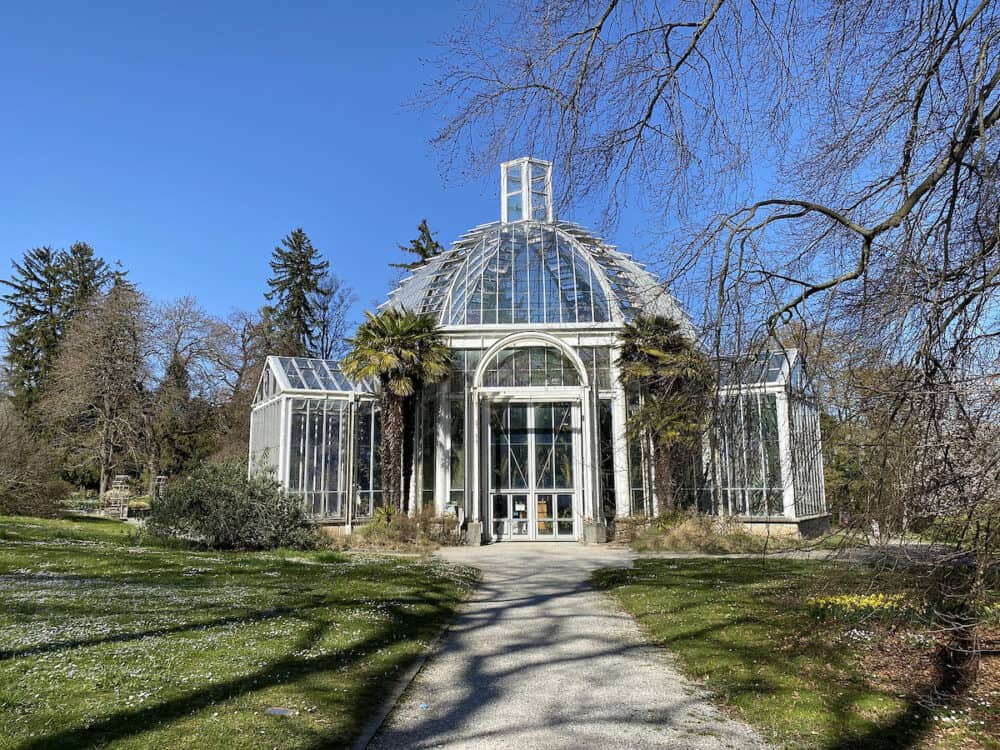
Musée d’Art et d’Histoire
Musée d’Art et d’Histoire, aka the Museum of Art and History, is one of the largest and most important museums in Geneva. Located in a gorgeous 20th-century Neoclassical building, it houses a vast collection of art and historical artefacts from all around the world.
The collection includes over 650,000 objects, ranging from ancient artefacts to contemporary art, so you should dedicate a few hours to wandering the museum if you want to see as much as possible.
There are exhibits on Egyptian, Greek and Roman artefacts, as well as mediaeval and Renaissance art from Europe and the Middle East. You can also find a diverse collection of Asian art and artefacts, from ceramics and sculptures to textiles.
The museum’s ethnography section displays artefacts like Native American pottery and African masks, and there is a significant collection of coins, medals, arms and armour too.
One of the most impressive sections of the museum is the Fine Arts section, which features works by renowned artists such as Rembrandt, Monet and Rodin.
You can also see an extensive collection of Swiss art, including works by artists Ferdinand Hodler and Alberto Giacometti.
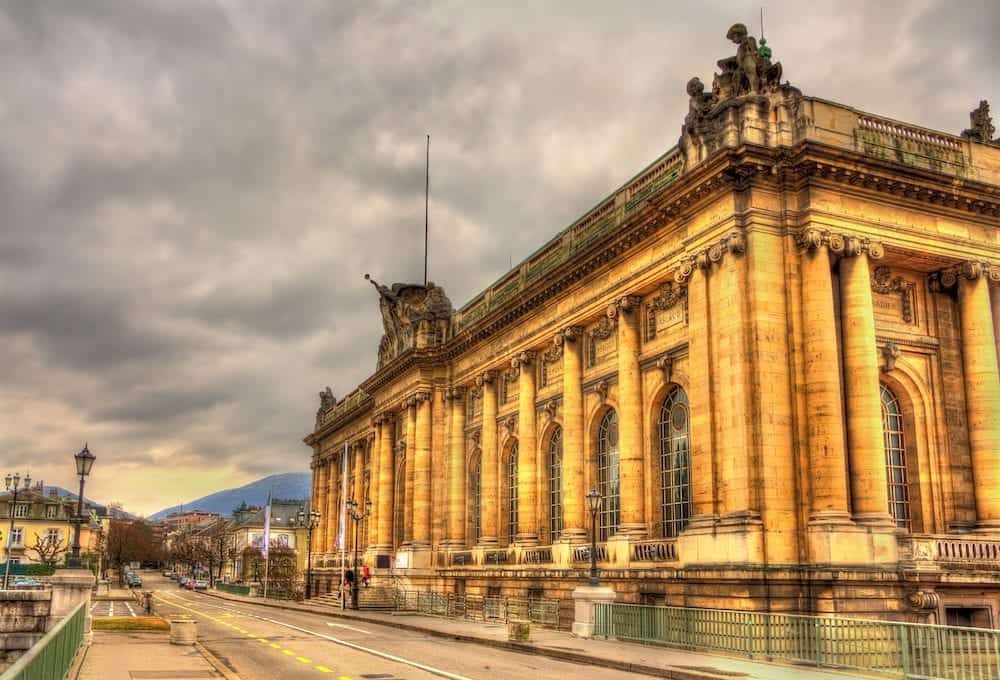
Palais des Nations
Located in Geneva is an important symbol of international diplomacy called the Palais des Nations. It is the second-largest United Nations Office, after the headquarters in New York City. The building was originally constructed as the headquarters of the League of Nations in the 1930s and was later taken over by the United Nations in 1945.
The Palais des Nations is situated on a hill overlooking Lake Geneva and the surrounding mountains. The building’s design is an example of Neoclassical architecture, featuring grand halls, spacious courtyards and ornate decorations.
The Assembly Hall is one of the most impressive rooms in the building, accommodating up to 2,000 people and used for meetings of the United Nations General Assembly and other conferences.
The Council Chamber is another important room, featuring a unique circular design and an impressive ceiling mural by Spanish artist Jose Maria Sert.
The building also showcases a variety of art collections and exhibits, including works by world-renowned artists like Picasso, Miró and Chagall. Guided tours are offered if you wish to explore and learn more about the collections, as well as the halls, conference rooms and outdoor spaces.
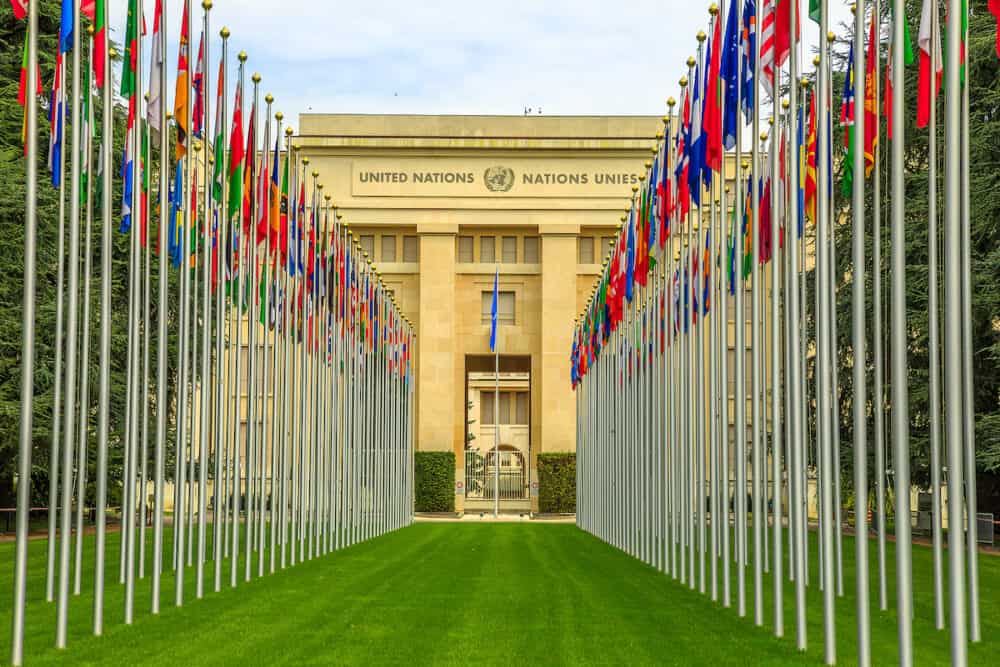
Place du Bourg-de-Four
Place du Bourg-de-Four is a historic square in the heart of Geneva’s Old Town. The square is named after the Bourg-de-Four, a neighbourhood found within the city’s walls during the Middle Ages.
Today, the square is surrounded by charming cafes, restaurants and shops, as well as historic buildings and landmarks. One such building is the Maison Tavel, the oldest private residence in Geneva, which is now a museum on Swiss history and culture.
One of the most notable features of Place du Bourg-de-Four is the fountain in the centre of the square. Dating back to the 18th century, it was originally used as a source of drinking water for residents but is now a popular spot for tourists to take photos and relax while enjoying the ambience of the square.
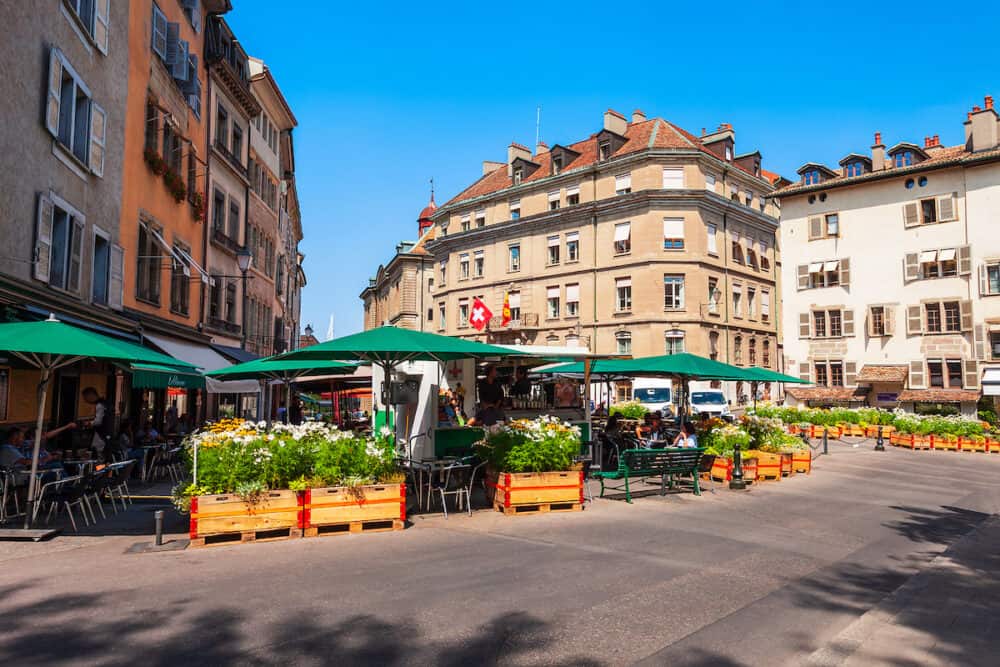
Mont Salève
One of the most breathtaking Geneva sightseeing activities is a cable car journey up to Mont Salève. Although this mountain is actually located on French soil, it is known as the “Balcony of Geneva” for the stunning views you get across the city and the lake as you make your way to the top.
The cable car takes less than five minutes and carries you to a height of 1,100 metres. First, to catch it, you’ll have to make your way to Veyrier, which is about a 20-minute car or bus ride from Geneva.
You’ll then have to cross the border into France to get to the Téléphérique du Salève, so remember to bring your passport for ID.
Once you’re at the top of Mount Saleve, you can go hiking, mountain biking, rock climbing, paragliding and more.
There’s also a restaurant by the cable car arrival point called L’Horizon. Of course, if you don’t have the extra time for outdoor activities, you can come here just to see the sights and then make your way back down again.
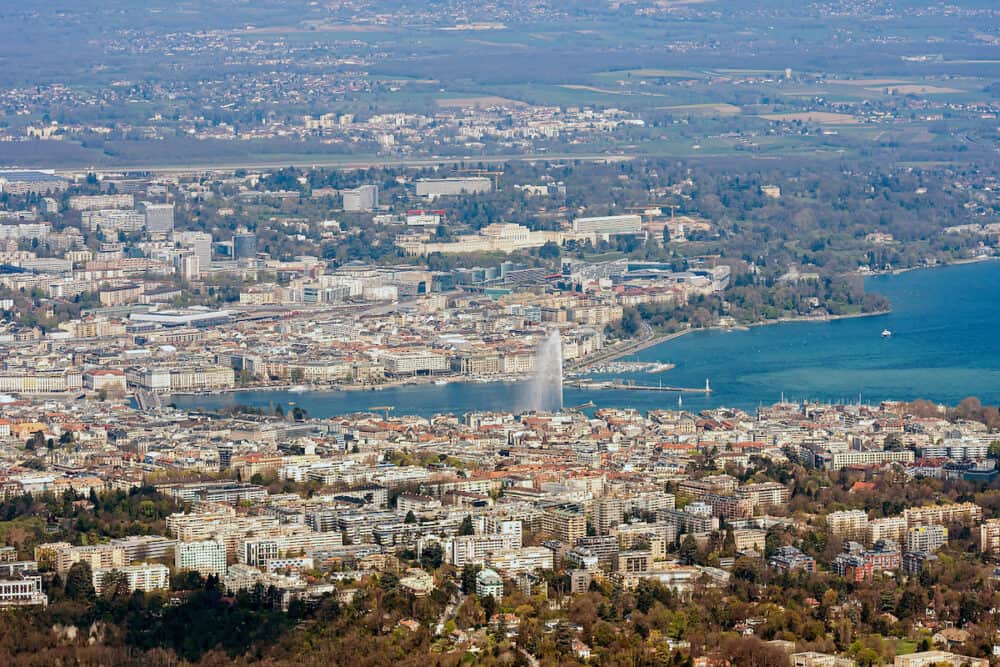
The Natural History Museum
The Natural History Museum of Geneva is one of the largest museums of its kind in the world. Housing over 10,000 specimens, the museum is home to an extensive collection of fossils, minerals, plants and animals. With so much to see here, it’s worth allocating a few hours to explore and learn as much as you can.
Founded in 1820 by a group of scientists, it now showcases an impressive range of exhibits, including a large display of dinosaur skeletons, a gallery of taxidermy animals from around the globe, and a diverse collection of rocks and minerals.
One of the most popular exhibits is the collection of Swiss fauna, featuring over 1,500 specimens of mammals, birds and reptiles native to Switzerland.
The museum also contains over one million preserved insect specimens, making it one of the largest insect collections in the world.
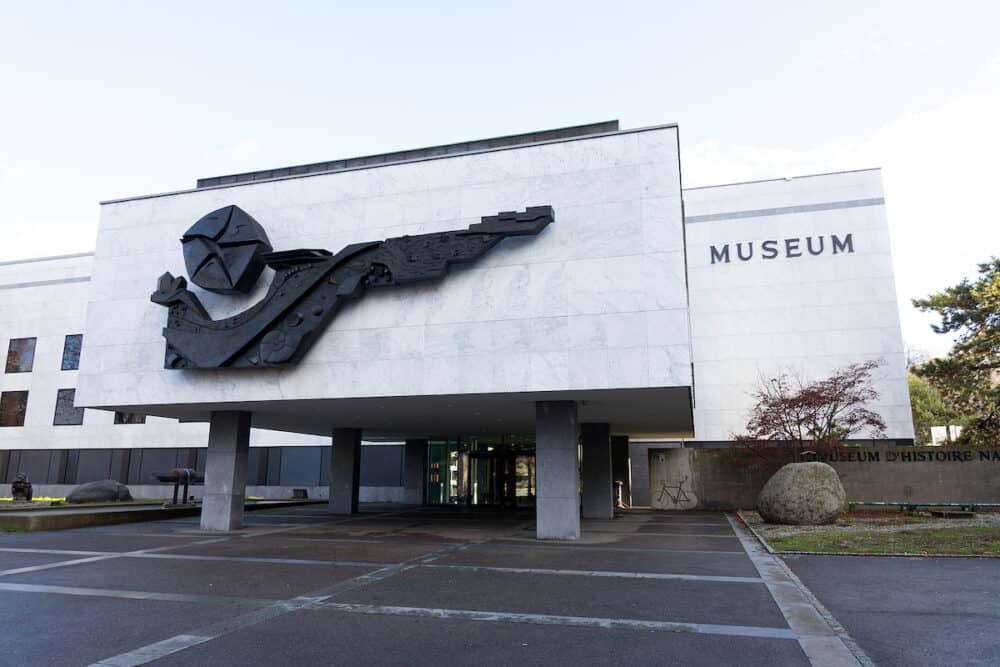
Brunswick Monument
The Brunswick Monument is a stunning mausoleum honouring Charles II, Duke of Brunswick, who died in Geneva in 1873.
The Duke left his fortune to the city of Geneva, requesting in his will that this monument be built for him. Following the requirements laid out in the will, the monument mimics the style of the 14th-century Scaliger Tombs in Verona, Italy and includes statues of his father and grandfather.
Standing 20 metres tall, the beautiful neo-Gothic structure is built from white marble and is adorned with intricate sculptures and carvings.
The monument is located in the Parc de Bastions, as the Duke had also specified it be built in a “prominent position”. You can view it from the street, up close, or sit down at the park’s Cottage Café and marvel at the monument with a cup of coffee in hand.
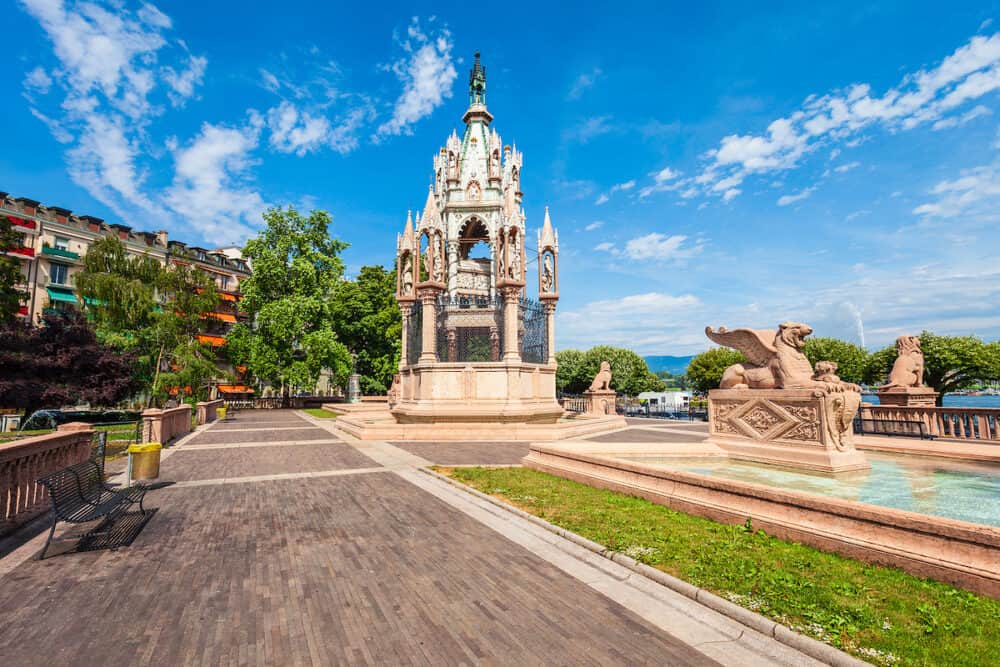
Patek Philippe Museum
Another of Geneva’s notable museums is the Patek Philippe Museum. As the name suggests, it is dedicated to the prestigious Swiss watch brand, Patek Philippe.
Established in 2001, the museum displays a wide range of pocket watches, wrist watches and even clocks, including some of the earliest portable timepieces and the most complex watches ever made.
Although there is a focus on the watches produced by Patek Philippe, the museum is also a great place to learn about the history of watchmaking from the 16th century to the present day.
In addition to the library containing a collection of books on the history of timekeeping, there are interactive exhibits to show you the techniques used to make various timepieces.
Overall, the museum is a great place to check out if you have an interest in watches or horology, or feel like visiting somewhere a little different.
Les Schtroumpfs
If you’re interested in doing some off-the-beaten-path sightseeing in Geneva, don’t miss Les Schtroumpfs, a group of unique buildings inspired by both the Smurfs and the Spanish artist Antoni Gaudi.
This whimsical housing complex was constructed in the early 1980s and was designed by Swiss architects Georges Berthoud, Christian Hunziger and Robert Frei. The distinctive architecture includes colourful window frames, rounded edges and balconies, and other irregular features.
These quirky buildings are, in fact, liveable, and there are around 170 city-subsidised apartments here. If you have the time to check it out, this hidden gem is found on Rue Louis-Favre in the Les Grottes neighbourhood, less than a 10-minute walk from Geneva’s main train station.
Red Crescent Museum
Located near the Palais des Nations is the International Red Cross and Red Crescent Museum, dedicated to the history and work of the humanitarian movement.
Through artefacts, documents, photographs, multimedia displays and personal stories, the museum’s permanent exhibition aims to educate visitors on the birth of the Red Cross, its humanitarian work during times of conflict, and the promotion of human rights.
The museum also invites you to reflect on how humanitarian action affects us all. There are audio guides available in English, as well as multiple other languages.
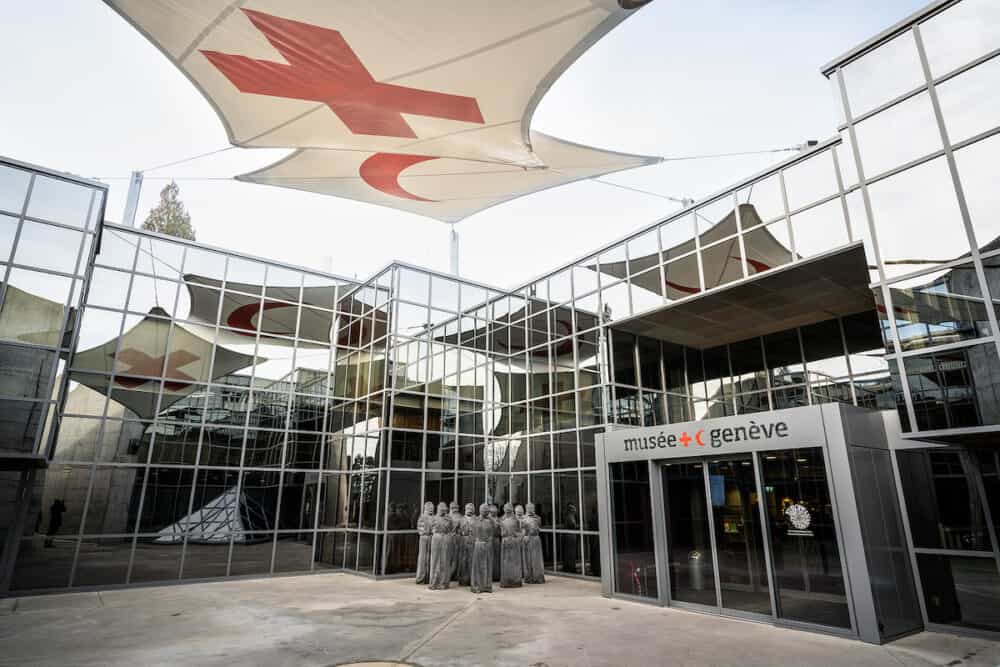
Mont Blanc
One of the best excursions from Geneva is to Mont Blanc, the highest mountain in the Alps and all of Western Europe. It is located on the border between France and Italy, about 90 kilometres southeast of the city.
Chamonix, one of the main ski towns on the French side of Mont Blanc, takes a little over an hour to get to by car. If you’re all about convenience, you can book a customisable day tour to take you there and back.
Optional activities include going through a tunnel of ice on the Mer de Glace train or riding a cable car up to the peak of the mountain at 3842 metres high.
Mont Blanc is renowned for its challenging climbing routes, with climbers from around the world coming here to test their skills and endurance.
However, climbing the mountain is a serious undertaking that requires experience, physical fitness, and proper equipment, and should only be attempted by climbers with appropriate training and support.
For those who prefer a less strenuous adventure, Mont Blanc also offers a range of hiking trails, from gentle walks through scenic valleys to multi-day hikes.

CERN
CERN, the European Organization for Nuclear Research, is based outside of Geneva and contains the largest particle physics laboratory in the world.
As one of the world’s most prestigious research institutions, its purpose is to promote scientific collaboration and discovery in the field of particle physics.
The research conducted here has led to many important discoveries and breakthroughs, not only relating to particle physics but in the medical research and environmental science fields too.
Established in 1954, CERN is best known for its Large Hadron Collider, the world’s largest and most powerful particle accelerator.
CERN is open to visitors, offering a range of free tours and programs for the public. You can explore the organisation’s facilities like the Synchrocyclotron, learn about the latest research in particle physics, and even meet with scientists and researchers working at CERN.
This is a great opportunity if you have an interest in science. Keep in mind that tours last an hour and a half and must be booked in advance.
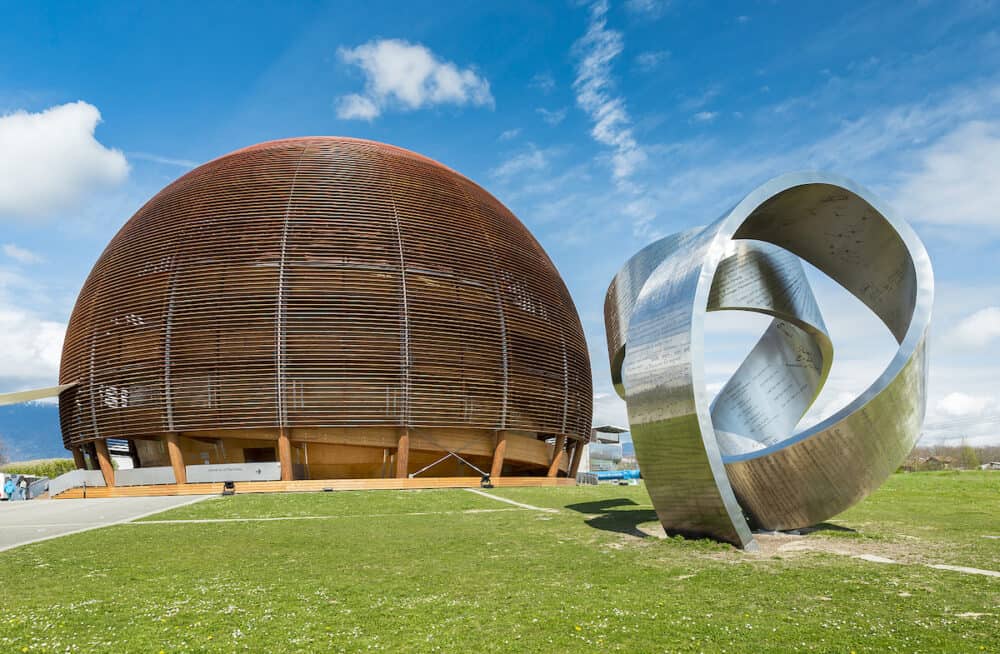
Parc La Grange
One of the most peaceful Geneva places to visit is Parc La Grange. This huge park covers an area of 200,000 square metres, making it the largest green space in Geneva.
Originally a private estate by Swiss banker Charles Favre, it became the property of the city in 1918 and soon opened to the public.
Meeting the shores of Lake Geneva, the park features an English-style garden, a rose garden with over 10,000 roses, an alpine garden, a rock garden, an orangery, fountains and more.
There’s also the 18th-century villa, as well as two theatres, Théâtre de l’Orangerie and Théâtre de Verdure.
Within the villa is a library with more than 12,000 old books. Parc La Grange is open daily and is a wonderful place to come and wander around when the weather is nice.
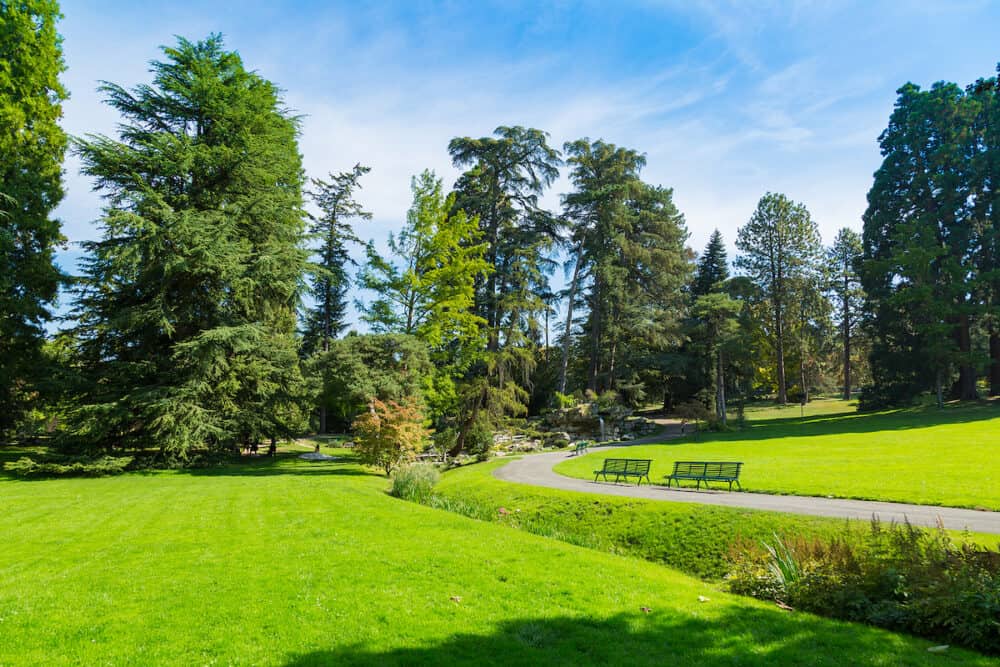
Christmas Markets
One of the best things to do in Geneva in winter is to explore the city’s beloved Christmas markets. The markets typically run from late November until Christmas Eve and feature dozens of stalls selling souvenirs, handmade crafts, and holiday-themed foods and drinks.
Although there are smaller markets all around the city, the largest is held in the Old Town in Place de la Fusterie. (If you happen to visit Geneva outside of Christmas time, this square also hosts regular markets throughout the year.) This market is perfect for buying unique gifts for friends and family made by local Swiss artists.
Noël au Jardin is a popular market too, with old-fashioned carousel rides for the kids and a station to make your own Christmas decorations. Regardless of which market you end up at, you’ll instantly get into the festive spirit with live music, magical twinkling lights, and a cup of mulled wine or hot chocolate.
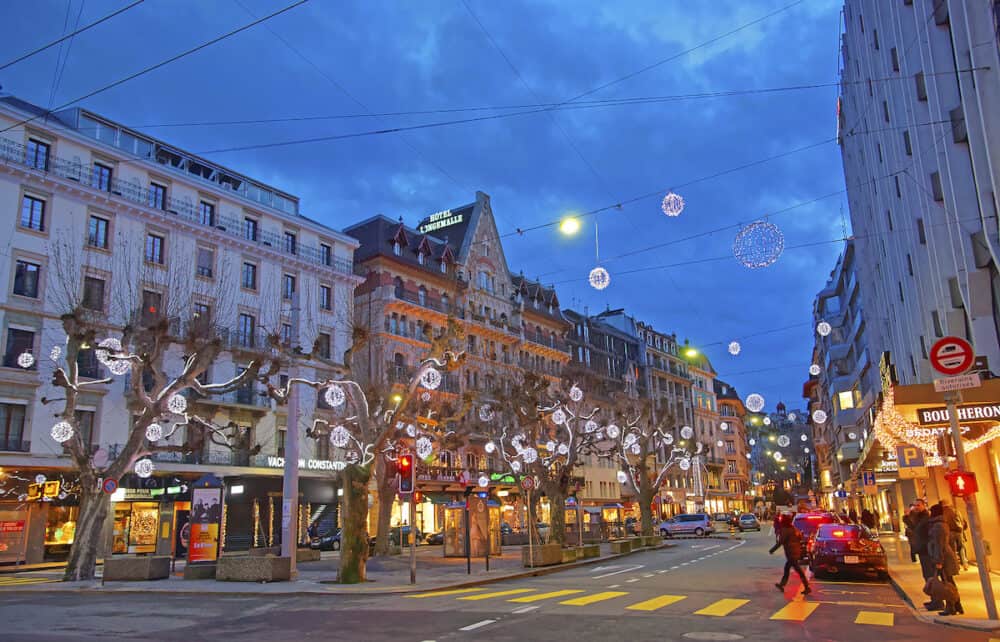
Recommended tours in Geneva
- Chocolate Flavours Tours Geneva: 3-hour Chocolate Tasting and Old Town Visit
- Geneva and Annecy Tour With Optional Lake Geneva Cruise
- Chamonix and Mont Blanc Day Trip from Geneva
- Annecy Half-Day Tour from Geneva
- Geneva City Tour
- Geneva City Tour and Boat Cruise
- Geneva Fondue Tour in a TukTuk (electric)
- Day Trip to Montreux and Château de Chillon from Geneva
- Glacier 3000 and Montreux Riviera from Geneva
- Geneva Panoramic and Tasting Vineyards Tour in a TukTuk (electric)
If you’d like to save it for later, please save it to Pinterest.
